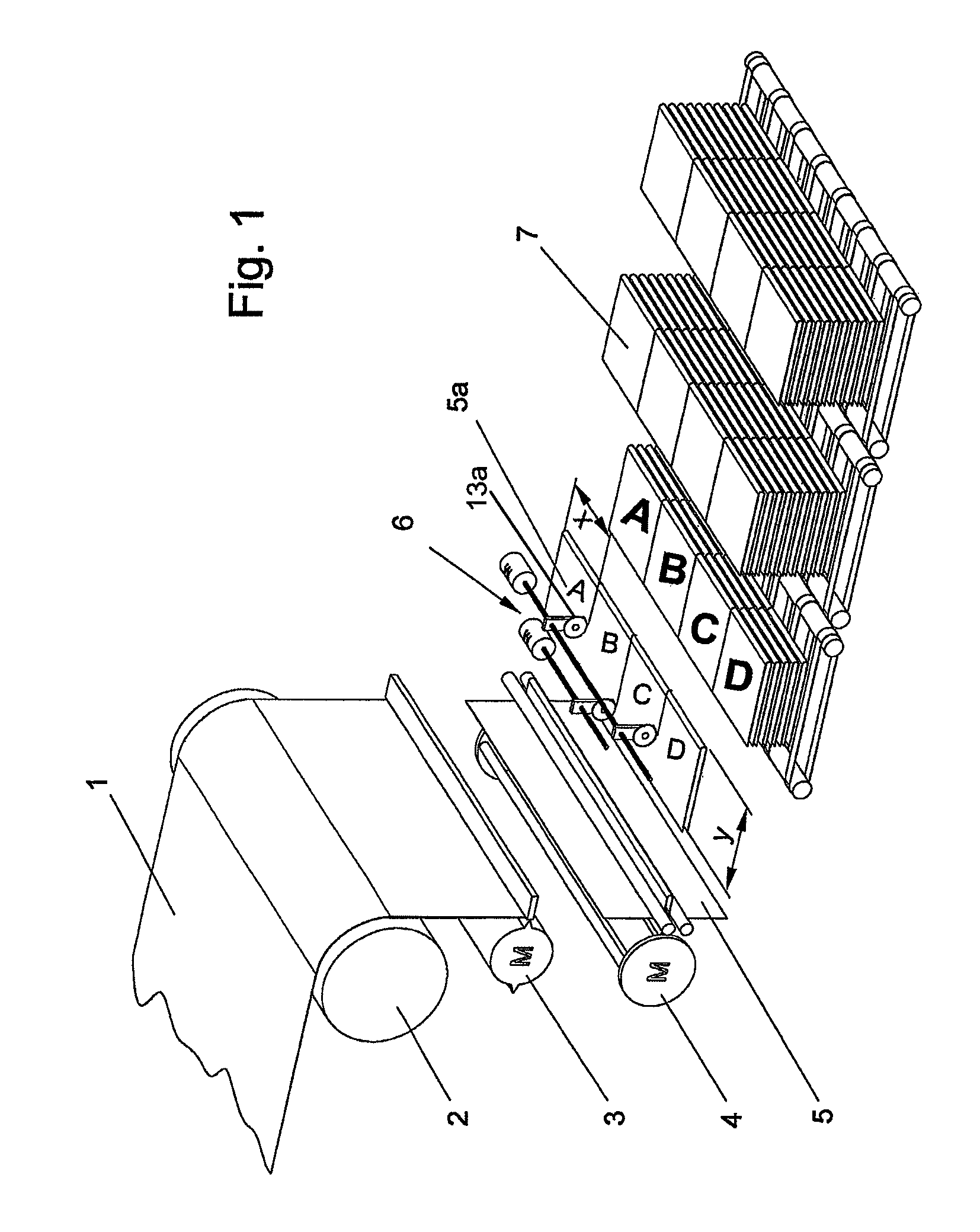Method for producing a printed product
a technology of printed products and methods, applied in the direction of printing, paper/cardboard containers, containers, etc., can solve the problems of high susceptibility of the system to malfunctions and failures, affecting the precise alignment of individual sheets in the stack, and the initial susceptibility, so as to achieve the effect of maximizing the width of the paper web
- Summary
- Abstract
- Description
- Claims
- Application Information
AI Technical Summary
Benefits of technology
Problems solved by technology
Method used
Image
Examples
Embodiment Construction
[0031]FIG. 1 shows a sequentially printed paper web 1, which may be printed on both sides. With the aid of an operative connection to a deflection roll 2, the paper web 1 may be transferred from a horizontal to a vertically extending path. The 90° deflection, shown herein, may not be system relevant per se because any other type of paper web guidance may also be possible, based on the available space. In principle, a deflection may not be required, as shown, for example, in FIG. 2.
[0032]FIG. 1 shows that following the deflection, a motor-driven cutting device 3, e.g., a rotary cutter, is used to cut a section having a specific length, in a direction crosswise to its longitudinal direction, from the paper web 1. This length may be determined to be such that it allows a one-time folding of the printed sheet with the aid of the folding sword 4 during the following folding operation. Subsequently, the folded printed sheet 5 may be divided into a plurality of partial web sections A-D (5a...
PUM
| Property | Measurement | Unit |
|---|---|---|
| width | aaaaa | aaaaa |
| length | aaaaa | aaaaa |
| mechanical elasticity | aaaaa | aaaaa |
Abstract
Description
Claims
Application Information
 Login to View More
Login to View More - R&D
- Intellectual Property
- Life Sciences
- Materials
- Tech Scout
- Unparalleled Data Quality
- Higher Quality Content
- 60% Fewer Hallucinations
Browse by: Latest US Patents, China's latest patents, Technical Efficacy Thesaurus, Application Domain, Technology Topic, Popular Technical Reports.
© 2025 PatSnap. All rights reserved.Legal|Privacy policy|Modern Slavery Act Transparency Statement|Sitemap|About US| Contact US: help@patsnap.com



